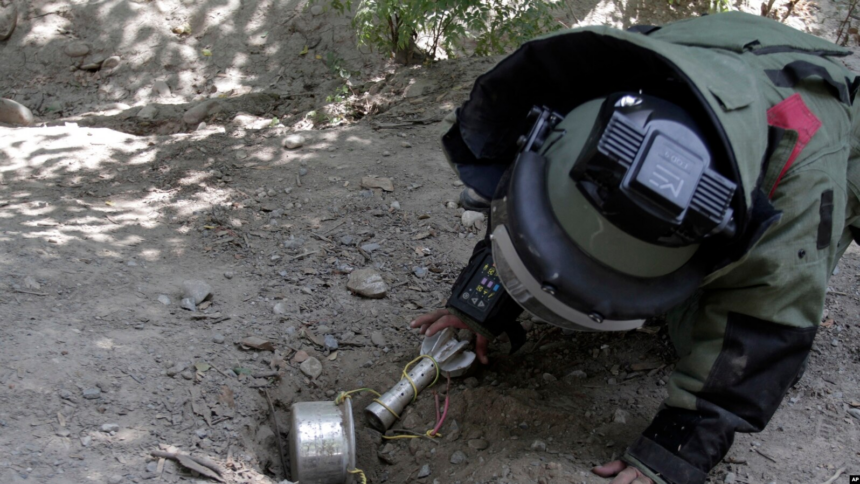RASC News Agency: The Taliban authorities have revealed that an average of at least 50 people are killed or injured every month across Afghanistan due to explosions caused by unexploded ordnance (UXO), remnants of decades of war and conflict. This alarming statistic was disclosed on Tuesday, April 15, during a national conference held in Kabul in observance of International Mine Awareness Day. Nooruddin Turabi, head of the Taliban’s National Disaster Management Authority, stated that children and nomadic populations particularly the Kuchi communities are the most frequent victims of these lethal remnants.
Turabi appealed to national and international organizations to intensify support for mine clearance operations, stressing the urgent need to rid Afghanistan of the deadly legacies of past wars. In the same event, Nooruddin Rustamkhil, Director of Mine Action Coordination within the same authority, reported that a total of 3,993 square kilometers of Afghanistan’s territory has so far been cleared of landmines and explosive remnants. However, he warned that more than 1,150 square kilometers especially in rural and conflict-affected areas remain dangerously contaminated. The International Committee of the Red Cross (ICRC) has long listed Afghanistan among the most heavily mine-polluted countries in the world. According to the ICRC, decades of conflict have littered the Afghanistan’s landscape with millions of unexploded devices, posing a persistent threat to civilians and impeding safe resettlement, agriculture, and infrastructure development.
Further compounding the crisis, the HALO Trust a leading demining organization reported in November last year that contamination from improvised explosive devices (IEDs) had spread across more than 65 square kilometers, up from 53 square kilometers in 2022. These hazardous zones have been identified in at least 26 of Afghanistan’s 34 provinces. International reports indicate that 60 countries worldwide are grappling with landmine contamination, and Afghanistan remains among the top four most critically affected. Despite this grim ranking, demining efforts in the country continue to face major logistical and political obstacles.
Analysts argue that the Taliban’s narrow governance agenda, focused heavily on ideological enforcement rather than public safety and humanitarian coordination, has further hampered effective demining operations. Without comprehensive international engagement and strategic action, the country’s mine contamination crisis is expected to continue exacting a tragic toll on innocent lives.






